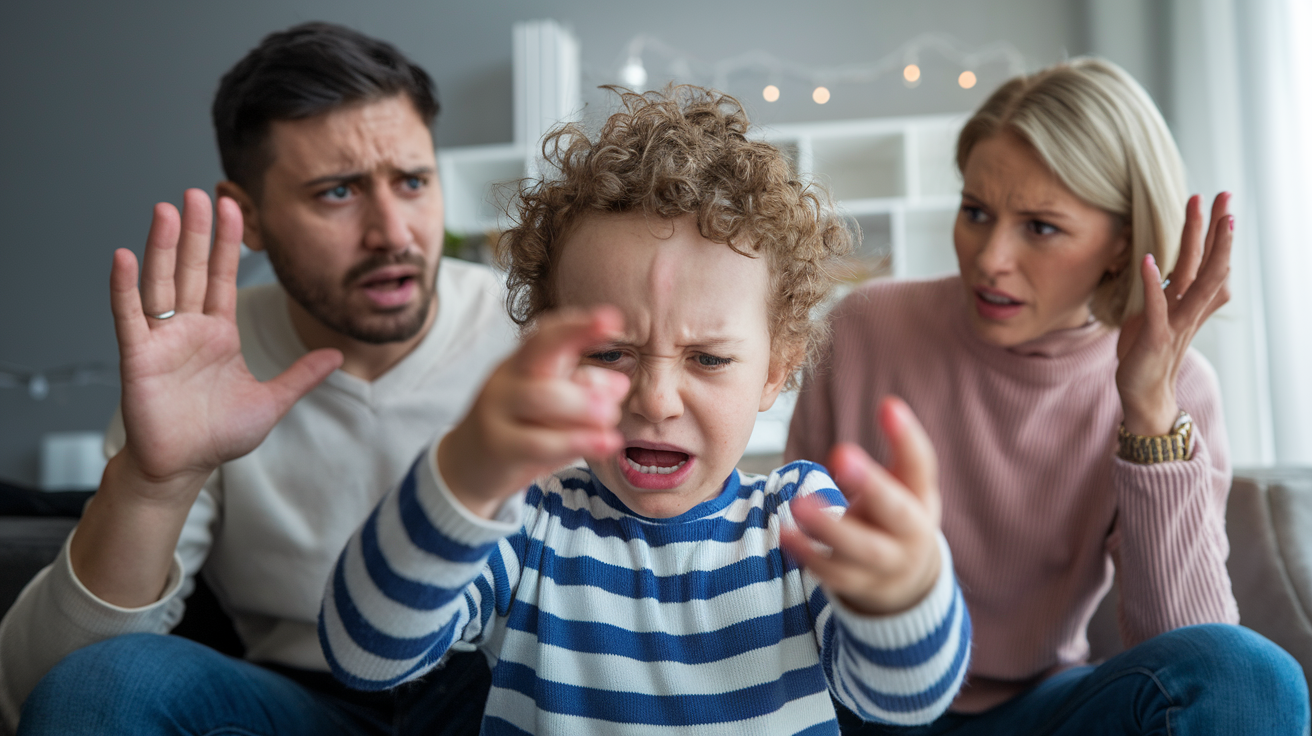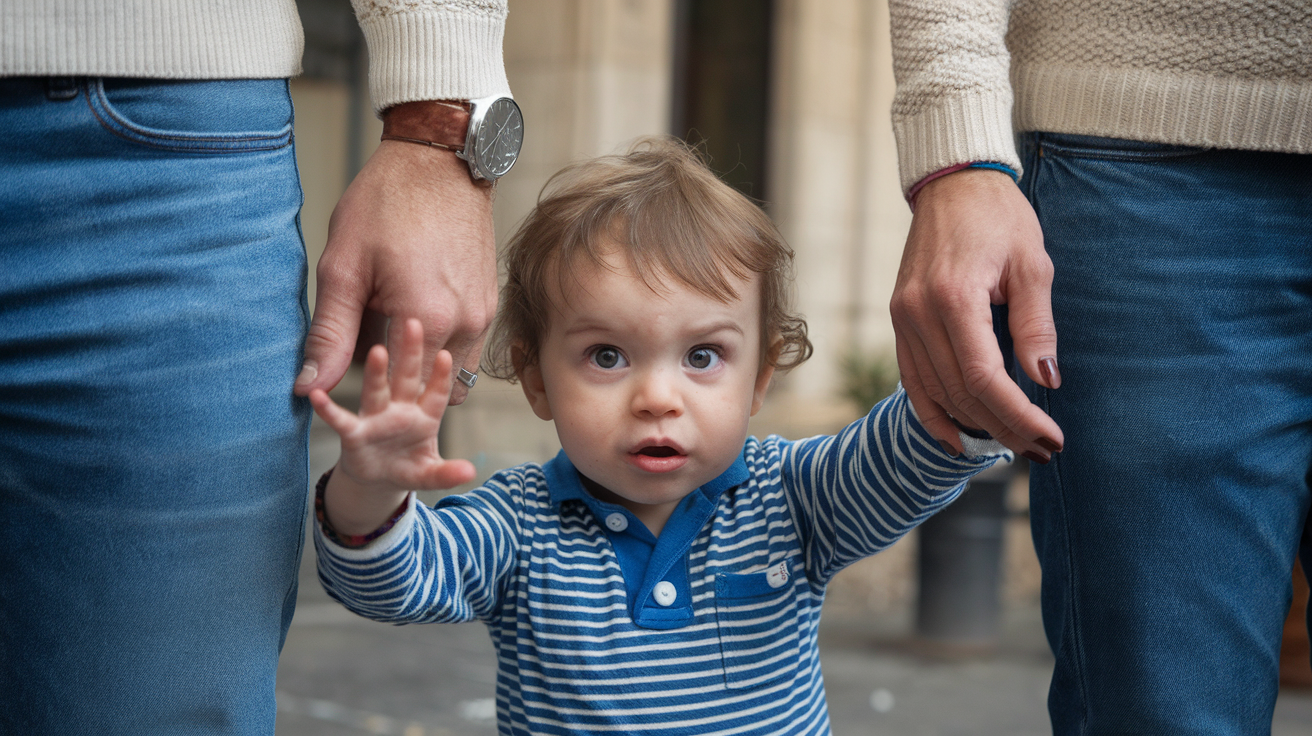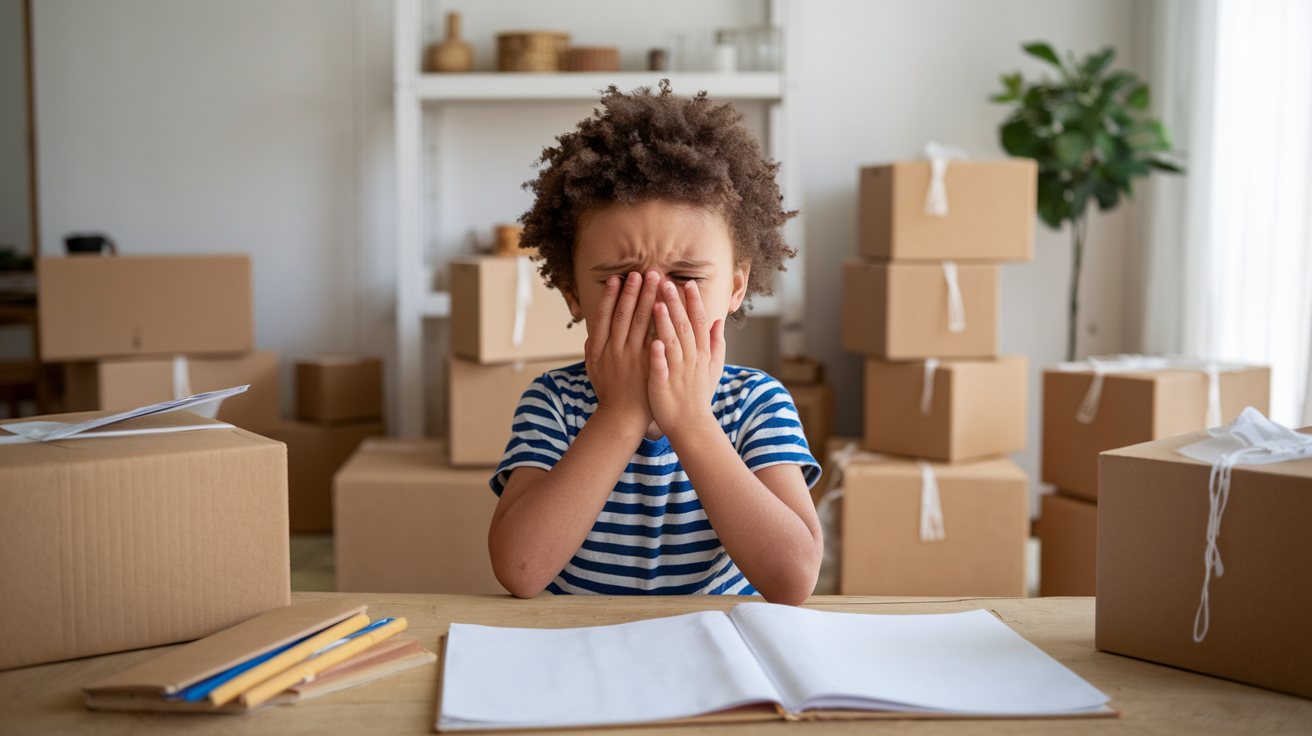Your child hitting themselves can be concerning and upsetting to watch.
As parents notice this behavior, questions arise- Is this normal? Should I worry?
The truth is that self-hitting is common among young children. It occurs in various situations, from playtime to moments of frustration.
Research shows that self-hitting serves different purposes for children – from getting attention to handling big emotions they don’t yet understand.
While this behavior typically fades as children develop better communication skills, knowing when and how to respond can help parents guide their little ones through this phase.
This blog will show you practical strategies and insights to support your child during this time.
Understanding Self-Hitting Behaviour in Children

Children might hit themselves for several reasons, making it essential to understand the underlying causes.
Physical pain, like teething or ear infections, can trigger this response as young ones try to cope with discomfort.
Emotional overload, such as intense frustration or anger, may lead to self-hitting when kids can’t express their feelings through words.
Some children use this behavior to seek attention or communicate their needs when they feel unheard.
The age between 12-24 months is particularly significant, as toddlers start experiencing complex emotions but haven’t mastered verbal expression.
This behavior can also appear during times of change, like starting daycare or welcoming a new sibling, when children feel a loss of control in their environment.
Common Reasons Why Children Hit Themselves
Here are some common reasons that highlight the underlying factors contributing to this self-harming behavior in children.
1. Physical Discomfort and Pain

Toddlers and young children often lack the ability to point out exactly where it hurts.
When experiencing physical discomfort like teething pain, ear infections, or stomach aches, they might resort to hitting their heads or other body parts.
This behavior can serve as their way to cope with or communicate pain. Some children hit a specific area that hurts, which can help parents identify the source of discomfort.
Medical attention becomes necessary when self-hitting accompanies signs of illness, such as fever or changes in eating patterns.
The intensity and frequency of self-hitting might increase during periods of physical distress.
Some children learn that this behavior draws parent attention to their discomfort. Recording when these incidents occur can help identify patterns related to physical issues.
2. Communication Challenges and Frustration

When words fail them, children often turn to physical actions. Limited vocabulary or speech delays can make expressing basic needs challenging.
A child who wants milk but can’t say the word might hit themselves out of pure frustration.
This behavior peaks during the toddler years when children understand more than they can say. The gap between what they want to communicate and what they can express creates significant stress.
Teaching simple sign language or offering visual cards can provide alternative communication methods.
Parents who notice their children frequently self-hit during communication attempts should monitor their child’s language development and consider a professional evaluation if concerns persist.
3. Seeking Attention and Response

Children quickly learn which behaviors get adult attention. Self-hitting often triggers immediate responses from concerned parents.
This rapid reaction teaches children that self-hitting effectively gains attention, even if it’s negative.
Some children use this behavior during transitions or when parents are busy with other tasks. The pattern might start subtly and increase if it successfully draws attention.
Breaking this cycle requires careful balance – acknowledging the child’s need for connection while avoiding reinforcement of self-hitting.
Creating regular one-on-one time and praising positive attention-seeking behaviors can reduce the need for physical actions.
4. Emotional Regulation Difficulties

Managing big feelings presents a significant challenge for young children. When emotions feel too big to handle, some children hit themselves as a way to release these feelings.
This behavior might appear during tantrums, moments of anxiety, or times of excitement. The physical sensation can serve as a distraction from overwhelming emotions.
Some children use self-hitting to calm themselves, similar to how adults might pace or fidget when stressed.
Learning to identify emotions and developing coping strategies takes time and guidance.
Parents can help by modeling appropriate emotional expression and offering simple calming techniques suitable for young children.
5. Sensory Processing Differences

Some children experience sensory input differently than others. Self-hitting might provide sensory feedback that feels satisfying to their nervous system.
This behavior often appears in specific situations, like noisy environments or during transitions between activities.
Children might hit their heads when tired or overwhelmed by sensory experiences, and by understanding these sensory triggers can help parents modify environments and routines.
Some children benefit from alternative sensory activities, like using squeeze toys or movement breaks.
Professional occupational therapy can provide strategies tailored to individual sensory needs.
6. Developmental Changes and Transitions

Major life changes can trigger self-hitting behaviors in children. Starting daycare, moving to a new home, or adjusting to a new sibling creates stress.
During these transitions, children might feel a loss of control over their environment. Self-hitting can emerge as an attempt to cope with these changes.
Some children use this behavior more frequently during developmental stages when learning new skills creates additional stress.
Creating consistent routines during changes helps children feel more secure. Small daily transitions might also trigger this behavior, making predictable schedules important.
7. Sleep-Related Issues

Tiredness significantly impacts children’s behavior and emotional control. Self-hitting sometimes appears when children fight sleep or feel overtired.
This behavior might increase during nap transitions or changes in sleep schedules. Some children hit themselves while settling down for sleep or upon waking.
Sleep disruptions can make self-hitting more frequent during daytime hours.
Establishing solid sleep routines and recognizing early signs of tiredness helps prevent sleep-related self-hitting.
Monitoring sleep patterns and adjusting schedules based on age-appropriate sleep needs can reduce these incidents.
How to Respond when a Child Hits Themselves
- Stay Calm and Move Close: Respond calmly and move near the child to create a sense of security.
- Use Gentle Tones: Speak softly and use soothing words to reassure the child.
- Acknowledge Their Feelings: Say simple phrases like “I see you’re upset” to validate emotions without reinforcing the behavior.
- Offer Alternative Outlets: Encourage activities like squeezing a soft toy or taking deep breaths to express emotions safely.
- Maintain Consistency: Use the same calm approach each time to help the child learn better coping strategies.
- Avoid Strong Reactions: Staying neutral prevents unintentionally reinforcing the behavior.
- Create a Quiet Moment: A peaceful environment helps the child feel secure and reduces emotional intensity.
- Praise Positive Coping Skills: When the child calms down, acknowledge and praise them for using healthier ways to express feelings.
- Redirect Attention: Gently shift the child’s focus to a different activity or object to help them regain control.
- Teach Simple Coping Strategies: Guide the child in using calming techniques like counting to ten or hugging themselves for comfort.
- Ensure a Safe Environment: Remove any objects that could cause harm and create a space where the child feels protected.
How Self-Hitting Differs Across Ages
| Age Group | Reasons for Self-Hitting |
|---|---|
| 6-12 months | Exploring sensations and movement control. |
| 1-2 years | Frustration due to limited speech abilities. |
| 2-3 years | Increased self-hitting during tantrums as they test boundaries and manage emotions. |
| 4-5 years | Less frequent self-hitting, but may occur when extremely upset. |
| School-age | This might indicate a need for extra support in stress management. |
Preventing Self-Hitting Behaviour

Prevention starts with recognizing early signs of distress before self-hitting begins. Creating a predictable daily routine reduces anxiety and stress in young children.
Teaching basic emotional vocabulary helps them name their feelings. Simple words like “mad,” “sad,” or “tired” give children tools to communicate without physical actions.
Setting up a quiet corner with comfort items allows children to self-regulate when feeling overwhelmed.
Regular physical activities and outdoor play provide healthy outlets for releasing energy and managing emotions.
Reading books about feelings and using puppet play can help children understand and express emotions safely.
Establishing clear, age-appropriate expectations and maintaining a structured environment gives children a sense of security.
Working with caregivers and family members to maintain consistent responses ensures children receive steady support in developing healthy emotional expression.
Interactive Strategies for Parents and Caregivers
- Play “Stop and Go” games to build self-control skills.
- Bubble-blowing encourages deep breathing for emotional regulation.
- Puppet shows help children practice expressing their feelings.
- A feelings chart allows kids to identify and communicate emotions.
- Squeeze balls and play dough provide a safe way to release tension.
- Reading books about emotions helps children learn new coping skills.
- A cozy corner gives children a quiet space to calm down.
Conclusion
Self-hitting behaviors in children signal a need for support, understanding, and guidance.
While this phase can worry parents, it’s helpful to remember that children often outgrow these actions as their communication skills improve.
Identifying triggers, such as physical discomfort, emotional stress, or tiredness, allows parents to address the root causes effectively.
Parents can reduce their children’s self-hitting incidents by responding patiently and teaching them better ways to express their needs.
Setting up structured routines, offering comfort items, and maintaining consistent responses create a supportive environment for emotional growth.
With time and proper guidance, children learn healthier ways to handle their feelings, making the challenging moments of self-hitting a temporary part of their development.
Frequently Asked Questions
When Should I Worry About My Child Hitting Their Head?
Seek medical help if self-hitting leads to bruising, marks, swelling, changes in mood, trouble sleeping, vomiting, or if the child seems confused after hitting.
How Do You Discipline a Child Who Keeps Hitting?
Stay calm, move to eye level, state “no hitting” firmly, explain why hitting hurts, and teach gentle touch. Give praise when the child uses words instead.
What are the Red Flags for Head Trauma in Children?
Watch for headaches, dizziness, unequal pupil size, loss of consciousness, repeated vomiting, slurred speech, or unusual sleepiness. Get immediate medical care.








